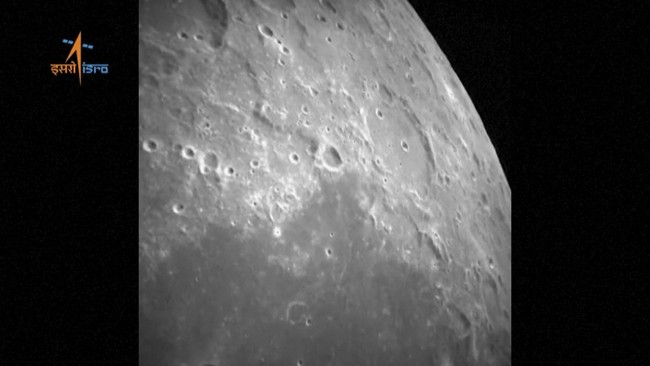
When I wrote about the moon landing yesterday i noted that a previous attempt by Japan, which took place just a month ago, had landed on the surface upside down.
Yesterday when the Odysseus lander reached the surface of the moon there was some confusion. For several minutes mission control didn’t have communications with Odysseus and couldn’t say what had happened. Eventually, they identified a weak signal which meant the lander was on the moon and alive. This was treated as a success by the company, Intuitive Machines, and by NASA.
But this afternoon in what appears to be a Friday news dump, IM has revealed that they believe the lander tipped over and is currently resting on its side on the moon’s surface. It’s not ideal but it’s not as bad as it sounds. At least that’s what we’re being told.
The chief executive officer of Houston-based Intuitive Machines, which built and flew the lander, said the vehicle is believed to have caught one of its six landing feet on the lunar surface during its final descent and tipped over, coming to rest propped up sideways on a rock.
Still, CEO Stephen Altemus said Odysseus “is stable near or at our intended landing site” near a crater called Malapert A in the region of the moon’s south pole.
“We do have communications with the lander” and sending commands to the vehicle, Altemus said, adding that teams were working to obtain the first photo images from the lunar surface at the landing site.
Here’s a screengrab showing the CEO with a model of the lander indicating how they believe it came to rest on the surface.
The Odysseus lander appears to be on its side, Intuitive Machines CEO Steve Altemus says. pic.twitter.com/iyr2ecs9KQ
— Eric Berger (@SciGuySpace) February 23, 2024
Luckily, the solar panels appear to be pointed upward which means it should still be able to charge itself. Even more fortunately, the side of the lander which ended up toward the ground was one carrying art rather than a scientific apparatus.
Altemus said the side of the vehicle that landed facing down toward the surface was the side where a static art installation was bolted to the spacecraft’s exterior, meaning that many of the other “active payloads” or scientific experiments bolted to its outside still have views of the lunar surface and sky. However, some of the vehicle’s antennas are pointed at the lunar surface, which is limiting communication to some extent.
Altemus said he believes all the other payloads will be operational.
It sounds as if the outcome could have been much, much worse. The lander was designed to use lidar and its own maps and internal judgment to carry out a smooth landing but yesterday mission control realized a kill switch on the lidar landing system had never been flipped before takeoff. That meant the lidar couldn’t be turned back on remotely. Incredibly, engineers were able to borrow some lidar from a NASA payload, patching the two systems together in software in the span of less than two hours.
Altemus said when he informed Crain in mission control that the vehicle would have to land without that system, his face turned white. Crain explained the MacGyver-like tactics his team performed are the kind of thing engineers normally spend days on testing and perfecting. But the team pulled it off in about an hour and a half.
“It was one of the finest pieces of engineering I’ve ever had the chance to be affiliated with,” Crain said.
So not a perfect mission but they did make it to the surface and the lander is still working. We should get a picture of the lander sometime this weekend.
Finally, here’s the press conference the company held today. This stats with the CEO’s discussion of the mission including how the lander wound up on its side.
